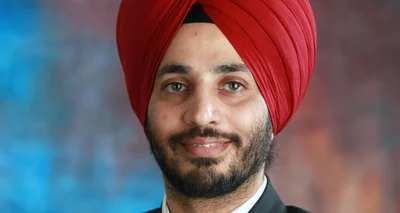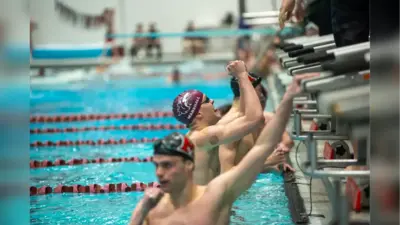University of Illinois College of Engineering issued the following announcement on Sept. 20
A year after the Washington, D.C., NFL football team retired its controversial Redskins name in July 2020, the team announced it will ban Native American-inspired headdresses and face paint from its stadium. It has been a historically eventful year when it comes to the issue of the use of Native American imagery in sports and elsewhere, said Jay Rosenstein, a Center for Advanced Study professor of media and cinema studies at the University of Illinois Urbana-Champaign. Rosenstein directed the 1997 documentary “In Whose Honor?” about the use of American Indian mascots in sports, and he maintains a database of schools, teams and businesses that have changed their mascots and imagery over the past 50 years. He spoke with News Bureau arts and humanities editor Jodi Heckel.
You discussed the significance of the Washington NFL team dropping its Redskins name when it announced that decision last year. Did you expect that to generate change elsewhere? Why did it have such an impact?
I absolutely expected it would generate change elsewhere, but what has happened is far beyond my expectations. I think – and hope, really – that we’ve finally hit the tipping point on the use of Native American sports mascots and names. The reason for the degree of impact is simple: Washington was the highest-profile inappropriate name in the country’s most popular sport. It sat at the top of the pyramid, so to speak. It’s cleared the way for the other major professional sports teams with Native names to do the same.
Since Washington made the move, the Cleveland Indians dropped their name and later announced they would continue as the Guardians. That leaves the Kansas City Chiefs, Atlanta Braves and Chicago Blackhawks as the remaining major professional sports teams. And a little over a month ago, Kansas City announced they were retiring their mascot, a horse named, of all things, “Warpaint.” That shows a first step in moving away from their appropriated Native American identity. Ultimately, that should lead to the team changing the name.
How does the number of changes in the year since the Washington Football Team decision compare with those in the years prior?
It doesn’t. It’s unprecedented. But it’s not just about numbers; it’s also about the changes themselves. Instead of schools changing their Native American mascots one at a time, which is essentially how it has happened over the past 50 years, four states – Colorado, Maine, Nevada and Washington – have now passed laws prohibiting Native American mascots, nicknames and logos in all state schools. And a fifth state, Connecticut, passed a law to strip state funding from communities that continue to use names or images that appropriate Native American culture. Several more states also have bills proposed or pending to prohibit Native American mascots in their schools, including Illinois, where state Rep. Maurice West has been leading the effort. By my count, 37 individual high schools and grade schools in 18 states have dropped their Native sports nicknames or mascots over the past year.
Has anything else surprised you?
Yes, the businesses that have stepped up and dropped Native American imagery from their products or logos, without really being pressured, have been a huge surprise. The most prominent is probably butter-maker Land O’ Lakes, which featured a drawing of a Native woman as part of their logo on all their products. That’s now gone. Both Mutual of Omaha insurance and Jacob Leinenkugel Brewing Company have done so too – again without any major outside pressure.
Did the Washington Football Team’s action make it easier for other decision-makers to institute change in their organizations?
In many cases, I think the move by Washington helped to alert some decision-makers that maybe it was time to reexamine their Native-related logos. But in general, these changes have usually occurred only after individuals from outside of the power structures were able to convince the decision-makers on the inside to take action. So it’s not as if these decision-makers, for the most part, have been patiently waiting for something like this to happen so they could justify dropping their Native imagery. It’s been a long process of educating the powers-that-be and the public about the harm caused by these mascots and nicknames. And that effort continues and still has a long way to go. But not quite as far as before.
Original source can be found here.





 Alerts Sign-up
Alerts Sign-up